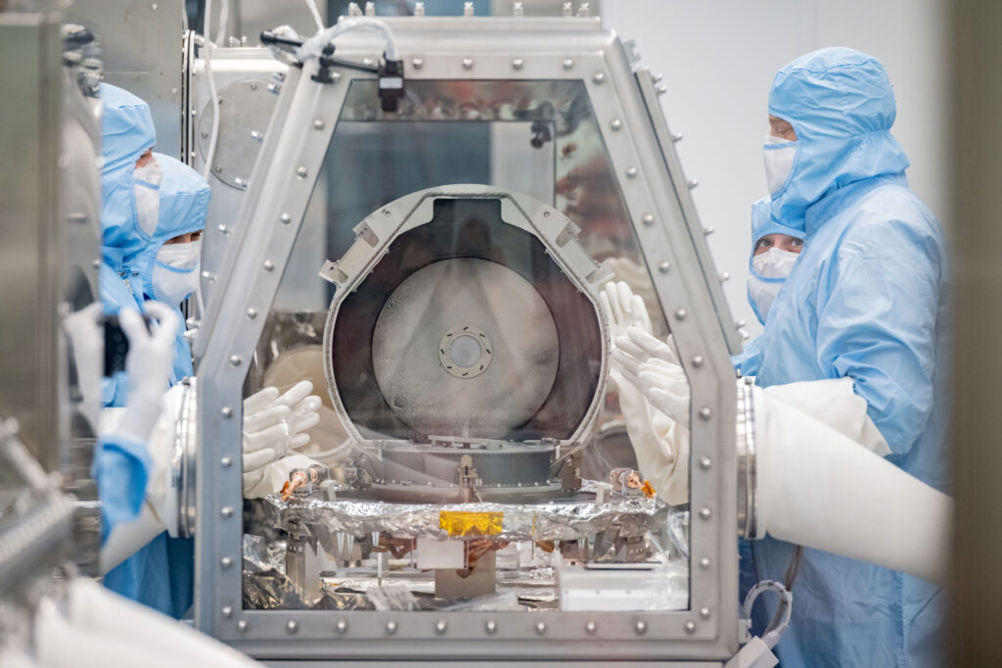Initial analysis of material from the 4.5-billion-year-old asteroid have been found to show evidence of water as well as high-carbon content, indicating that Bennu may contain the building blocks required to develop life on Earth. The findings, announced by NASA from the Johnson Space Centre in Houston, were part of a preliminary assessment of the OSIRIS-REx science team after the mission landed back on Earth in the Utah desert on September 24.
Related content
OSIRIS-REx had a goal to collect 60g of asteroid material. Curation experts at NASA Johnson - working in new clean rooms built especially for the mission - have spent 10 days so far carefully disassembling the sample return hardware to reach the bulk sample material within. However, when the science canister lid was first opened, bonus asteroid material was found covering the outside of the collector head, canister lid and base. According to NASA, there was so much additional material it actually slowed down the careful process of collecting and containing the primary sample.

“Our labs were ready for whatever Bennu had in store for us," said Vanessa Wyche, NASA Johnson director. "We've had scientists and engineers working side-by-side for years to develop specialised gloveboxes and tools to keep the asteroid material pristine and to curate the samples so researchers now and decades from now can study this precious gift from the cosmos."
Within the first two weeks, scientists performed “quick-look” analyses of the initial bonus material, collecting images from a scanning electron microscope, infrared measurements, X-ray diffraction, and chemical element analysis. X-ray computed tomography was also used to produce a 3D computer model of one of the particles. NASA said this early glimpse has provided the evidence of abundant carbon and water in the sample.
"As we peer into the ancient secrets preserved within the dust and rocks of asteroid Bennu, we are unlocking a time capsule that offers us profound insights into the origins of our solar system," said Dante Lauretta, OSIRIS-REx principal investigator and UArizona Regents Professor of Planetary Sciences.
"The bounty of carbon-rich material and the abundant presence of water-bearing clay minerals are just the tip of the cosmic iceberg. These discoveries, made possible through years of dedicated collaboration and cutting-edge science, propel us on a journey to understand not only our celestial neighbourhood but also the potential for life's beginnings.”
The mission's science team will spend the next two years characterising the samples and conducting analysis. NASA has said it will preserve at least 70 per cent of the sample at Johnson for further research by scientists worldwide, including future generations who will have access to more advanced scientific tools.











Invinity to build 20MWh flow battery in UK
A surprising comment for someone who (I think you´ve said in the past) worked in the industry. National Grid have a variety of reserve service schemes...